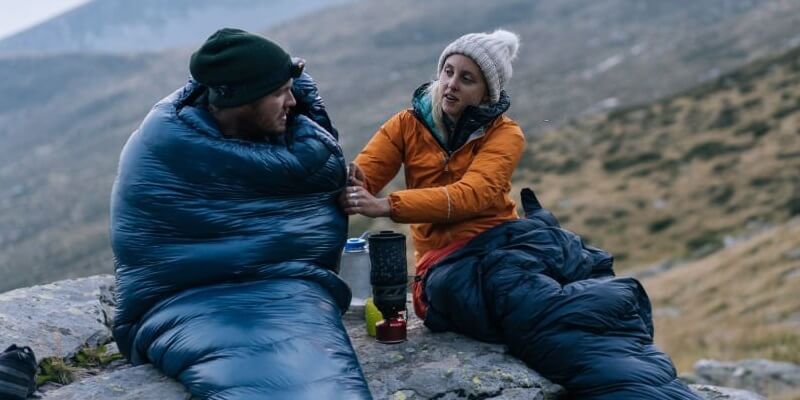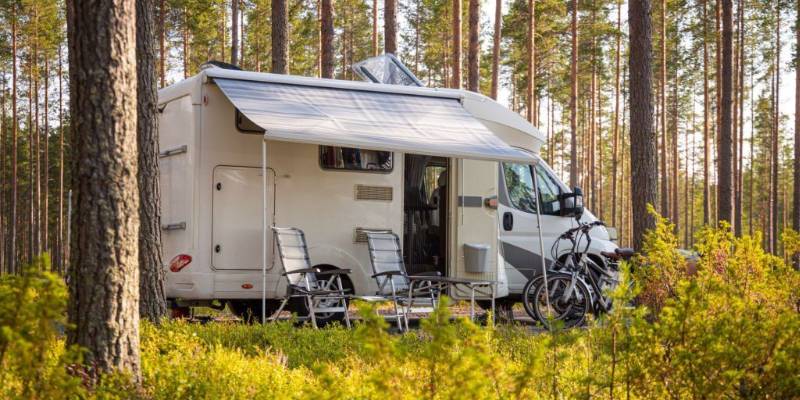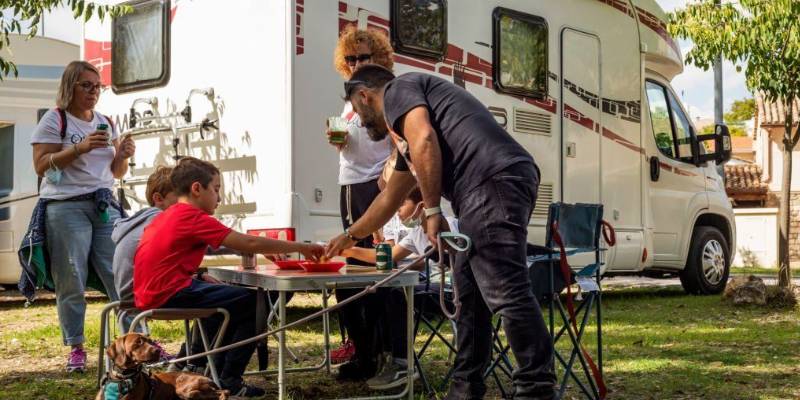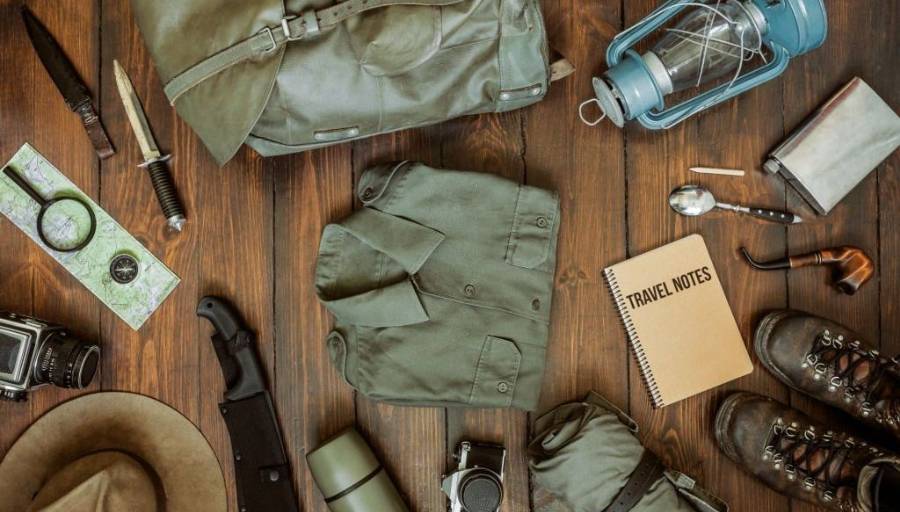What to Wear When Camping in the Winter
For winter camping, proper clothing is essential for staying warm, comfortable, and safe in the chilly outdoor environment. Unlike milder seasons, camping in winter requires additional layers and specialized gear to combat low temperatures, wind, and potential snow or rain. Discover what to wear when camping in the winter to ensure a cozy and protected experience.

In this guide, we will explore various aspects of winter camping attire, from base layers to outer shells, as well as accessories and footwear. We’ll discuss the importance of layering and insulation, the materials best suited for cold weather conditions, and the features to look for when choosing winter camping clothing.
Additionally, we’ll provide tips on maintaining warmth, managing moisture, and adapting your attire for different activities and weather conditions.
What to Wear When Camping in the Winter
Let’s see the essential clothing items and strategies for camping in the winter.
Layering is Key
Layering is the foundation of staying warm in cold weather. It involves wearing multiple layers of clothing that can be adjusted to regulate body temperature and manage moisture. The three primary layers are:
- Base Layer: The base layer is in direct contact with your skin and is responsible for moisture management. Look for moisture-wicking materials such as merino wool or synthetic fabrics like polyester or polypropylene. Avoid cotton, as it retains moisture and can leave you feeling cold.
- Insulating Layer: The insulating layer provides warmth by trapping body heat. Opt for materials like fleece, down, or synthetic insulation. Consider wearing multiple insulating layers for added warmth, depending on the temperature.
- Outer Shell Layer: The outer shell layer protects you from wind, snow, and rain. Choose a waterproof and breathable jacket and pants made of materials like Gore-Tex or similar technical fabrics. Look for features such as sealed seams, adjustable cuffs, and a hood to enhance weather protection.
Head and Neck Protection

A significant amount of heat is lost through the head, so wearing a hat or beanie is essential. Opt for a warm, moisture-wicking hat that covers your ears. Additionally, a neck gaiter or scarf can provide extra warmth and protect your neck from the cold.
Hands and Feet
Keeping your extremities warm is crucial in winter camping. Invest in insulated, waterproof gloves or mittens to protect your hands from the cold. Layering with a thin liner glove underneath can provide added warmth. For your feet, wear thick, moisture-wicking socks made of wool or synthetic materials. Insulated, waterproof boots with good traction are essential to keep your feet warm and dry.
Lower Body Protection
Layering is equally important for your lower body. Wear thermal or fleece-lined pants as your base layer. Over that, add insulated, waterproof pants or snow pants to protect against the cold and moisture. Look for pants with reinforced knees and seat for added durability.
Accessories
Don’t forget the small but crucial accessories:
- Gloves: Thin and dexterous gloves are useful for tasks that require finger mobility, such as cooking or setting up camp. Pack an extra pair in case one gets wet.
- Socks: Carry extra pairs of socks to keep your feet dry and comfortable throughout your trip.
- Hand and toe warmers: These disposable warmers provide additional heat and can be placed in your gloves, boots, or pockets.
- Sunglasses and sunscreen: The winter sun and snow glare can be intense, so protect your eyes and skin by wearing sunglasses with UV protection and using sunscreen on exposed areas.
Adapt to Weather Conditions
Adjust your clothing layers based on the weather conditions and your activity level. If you’re hiking or engaging in high-intensity activities, you may need to remove or unzip some layers to prevent overheating and excessive sweating. Monitor your body temperature and make adjustments accordingly.
Stay Dry
Moisture management is crucial in winter camping. Avoid sweating excessively by adjusting your layers and ventilation. If you do get wet, change into dry clothes as soon as possible to prevent hypothermia. Carry extra clothing to have dry options available.
Test and Prepare
Before heading out, test your clothing system in different weather conditions to ensure it keeps you warm and comfortable. Make adjustments as necessary and familiarize yourself with the layering process. Remember, the key to winter camping attire is layering, moisture management, and choosing the right materials.
What Not to Wear When Camping in the Winter
Here are some things you should not wear when camping in the winter:
Cotton Clothing
Avoid wearing cotton clothing, especially as a base layer. Cotton retains moisture and takes a long time to dry, leaving you feeling wet and cold. Opt for moisture-wicking materials like merino wool or synthetic fabrics that keep you dry and retain warmth.
Insufficient or Inadequate Layers
Failing to layer properly can lead to inadequate insulation and temperature regulation. Avoid wearing a single thick layer without proper base and insulating layers. Layering allows you to adjust your clothing according to your activity level and weather conditions.
Inadequate Footwear
Avoid wearing regular sneakers or non-insulated boots in winter camping conditions. Insulated, waterproof boots with good traction are essential to keep your feet warm, dry, and protected from the cold and snow.
Insufficient Head and Neck Protection
Don’t neglect your head and neck. Avoid wearing inadequate or non-insulated hats that do not cover your ears. Also, skip scarves that can become wet and freeze. Opt for proper winter hats and neck gaiters or scarves made of warm, moisture-wicking materials.
Inadequate Lower Body Protection
Steer clear of wearing jeans or non-insulated pants as your primary lower layer. They do not provide adequate insulation or moisture management. Opt for thermal or fleece-lined pants as your base layer, and layer them with insulated, waterproof pants or snow pants for proper protection.
FAQs
Can I wear jeans when camping in the winter?
We don’t recommend wearing jeans as your primary lower body layer when camping in the winter. Jeans are not designed for insulation or moisture management and can leave you feeling cold and wet. Opt for thermal or fleece-lined pants as your base layer and layer them with insulated, waterproof pants or snow pants for proper protection.
Can I wear a down jacket in wet winter conditions?
Down jackets are excellent for insulation, but they are not suitable for wet conditions. When down gets wet, it loses its insulating properties and takes a long time to dry. In wet winter conditions, opt for a synthetic insulated jacket or a down jacket with a waterproof outer shell layer to keep you warm and protected.
Is it necessary to wear a hat when camping in the winter?
Yes, wearing a hat is essential when camping in the winter. A significant amount of heat is lost through the head, and a hat helps to retain warmth and prevent heat loss. Choose a warm and moisture-wicking hat that covers your ears for maximum protection.
Can I wear cotton socks when camping in the winter?
It is not recommended to wear cotton socks when camping in the winter. Cotton retains moisture and takes a long time to dry, which can make your feet feel cold and increase the risk of frostbite. Opt for thick and moisture-wicking socks made of wool or synthetic materials to keep your feet warm and dry.
Should I wear a waterproof outer shell layer even if it’s not raining or snowing?
Yes, it’s still important to wear a waterproof outer shell layer even if it’s not actively raining or snowing. A waterproof shell protects you from wind and prevents moisture from seeping in. It also allows moisture and sweat to escape, keeping you dry and comfortable.
Can I wear regular sneakers when camping in the winter?
Regular sneakers are not suitable for camping in the winter. They lack insulation and waterproofing, which can leave your feet cold, wet, and at risk of frostbite. Invest in insulated, waterproof boots with good traction to keep your feet warm, dry, and protected in winter camping conditions.
Should I wear multiple pairs of gloves for added warmth?
Layering gloves can provide added warmth, especially in extremely cold conditions. Consider wearing thin liner gloves as a base layer for moisture-wicking and added insulation. Over them, wear insulated, waterproof gloves or mittens to provide additional warmth and protect your hands from the cold.
Do I need to wear sunscreen when camping in the winter?
Yes, it’s important to wear sunscreen when camping in the winter. The winter sun, combined with snow glare, can still cause sunburn and damage to your skin. Protect exposed areas of your skin by applying sunscreen with sufficient SPF and wearing sunglasses to shield your eyes from harmful UV rays.
Final Thoughts
Camping in the winter can be a rewarding and memorable experience, but it requires careful consideration of your clothing choices. Remember to focus on layering, moisture management, and choosing the right materials for insulation, protection from the elements, and breathability. Don’t forget to protect your head, hands, feet, and other exposed areas with appropriate accessories. Adapt your clothing to the weather conditions and your activity level, and always prioritize staying dry to prevent hypothermia.
Before embarking on your winter camping trip, test and familiarize yourself with your clothing system in various weather conditions. This way, you can make any necessary adjustments and ensure that your gear will keep you warm and comfortable throughout your adventure.
Lastly, always prioritize safety and be prepared for any emergencies or unforeseen circumstances. Inform someone of your camping plans, check weather forecasts, and carry necessary safety equipment, such as a first aid kit and emergency communication devices.





